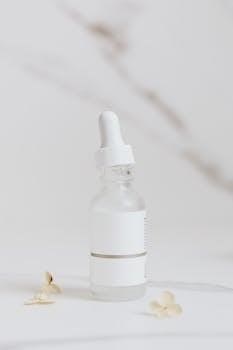Enlist Herbicide Label PDF⁚ A Comprehensive Guide
This guide provides information and recommendations for planting and using Enlist herbicides with Enlist corn and Enlist E3 soybeans. It is not a pesticide product label and does not replace the product labels for Enlist Duo and Enlist One herbicides. Always read and follow label directions.
Understanding Enlist Herbicides
Enlist herbicides are designed to fight weeds effectively while minimizing volatility and drift. These herbicides, including Enlist One and Enlist Duo, are key components of the Enlist Weed Control System. This system is designed for use with crops that have the Enlist trait, offering tolerance to 2,4-D choline and glyphosate.
Enlist herbicides contain 2,4-D with Colex-D technology, reducing drift potential. Enlist herbicides land and stay on target. Enlist One is a straight-goods 2,4-D choline herbicide, providing additional tank-mix flexibility. Enlist Duo combines 2,4-D choline with glyphosate for broad-spectrum weed control.

These herbicides should be applied according to label instructions, considering factors like wind speed and susceptible nearby crops. Be sure to use qualified tank-mix partners and appropriate spray nozzles. Enlist herbicides offer farmers better weed control for improved yields in Enlist crops. Consult the herbicide labels for specific application requirements, precautions, and restrictions.
Key Features of Enlist Technology
Enlist technology offers several key features designed for effective and responsible weed control. A primary feature is the Colex-D technology, which minimizes drift potential, ensuring the herbicide lands and remains on the intended target. This results in reduced off-target movement and greater precision during application. The Enlist system provides tolerance to 2,4-D choline and glyphosate, enabling control of a broad spectrum of weeds in Enlist crops.
Enlist herbicides provide enhanced tank-mix flexibility, allowing farmers to customize their weed control programs. This flexibility enables the use of multiple sites of action to manage herbicide resistance. The Enlist system is designed for use with Enlist E3 soybeans and Enlist corn.
Enlist herbicides feature neighbor-friendly weed control. The USEPA issued a new seven-year registration for Enlist One and Enlist Duo. Always consult the herbicide labels for specific application requirements, precautions, and restrictions for use and storage of the product. This includes proper nozzle selection, spray pressure, and environmental considerations to ensure responsible use of the technology.
Enlist One Herbicide⁚ Composition and Usage
Enlist One herbicide is a straight-goods 2,4-D choline formulation designed for exceptional weed control in Enlist crops. Its composition features Colex-D technology, contributing to ultra-low volatility and reduced drift potential. This formulation ensures the herbicide lands and stays on target, minimizing off-target movement and maximizing efficacy. Enlist One provides additional tank-mix flexibility, allowing it to be combined with qualified tank-mix partners to broaden the spectrum of weed control.
Enlist One is designed for use on Enlist E3 soybeans and Enlist field corn as part of the Enlist Weed Control System. It is a Group 4 herbicide, effective for controlling annual and perennial weeds. Application should be made according to the label instructions, considering the appropriate growth stage windows and weed height. Use spray rates from the product label when weeds are shorter than 6 inches and crops are within the appropriate growth stage window. Spray 2 pints per acre.

Always read and follow the label directions for mixing, application, storage, and disposal. To find supplemental information on this product in a registered state, please use our Label Finder tool.

Enlist Duo Herbicide⁚ Composition and Usage
Enlist Duo herbicide combines 2,4-D choline with glyphosate, providing a dual mode of action for broad-spectrum weed control in Enlist crops. The formulation incorporates Colex-D technology, which minimizes drift potential and ensures on-target application. This advanced technology reduces volatility and enhances the herbicide’s ability to stay within the intended treatment area, protecting neighboring crops and sensitive areas.
Enlist Duo is specifically designed for use on Enlist field corn, Enlist E3 soybeans, summerfallow, and prior to seeding or after seeding (but before crop emergence) in spring and winter. For optimal results, apply Enlist Duo within the appropriate growth stage windows when weeds are shorter than 6 inches. Use spray rates from the product label when weeds are shorter than 6 inches and crops are within the appropriate growth stage window. Spray 4.75 pints per acre.
It is crucial to consult the Enlist Duo herbicide label for a comprehensive list of weed species controlled and to adhere to all application guidelines. Enlist Duo and Enlist One herbicides are the only 2,4-D products authorized for use with Enlist crops.
Crops Compatible with Enlist Herbicides
Enlist herbicides, including Enlist Duo and Enlist One, are specifically designed for use with crops possessing the Enlist trait. These crops are genetically modified to tolerate the active ingredients in Enlist herbicides, providing farmers with a powerful tool for weed control without harming their crops. Key crops compatible with Enlist herbicides include Enlist field corn, Enlist E3 soybeans, and Enlist cotton.
Enlist E3 soybeans exhibit tolerance to 2,4-D choline, glyphosate, and glufosinate (Liberty), offering flexibility in weed management strategies. Enlist corn is engineered to withstand applications of 2,4-D choline and glyphosate. Enlist cotton similarly benefits from tolerance to these herbicides, enabling effective control of broadleaf weeds and grasses.
It is crucial to note that Enlist herbicides should only be applied to crops explicitly designated as Enlist crops. Application to non-Enlist crops can result in significant injury or plant death. Always consult the herbicide label and crop specifications to ensure compatibility and proper usage.
Application Guidelines⁚ Timing and Growth Stages

Proper timing and adherence to crop growth stages are crucial for maximizing the effectiveness of Enlist herbicides while minimizing potential crop injury. Enlist herbicides should be applied within specific growth stage windows to ensure optimal weed control and crop safety. Always consult the Enlist herbicide label for detailed application instructions and growth stage restrictions.
For Enlist cotton, applications should be made up to the first white bloom stage. Enlist E3 soybeans allow for application through the R1 growth stage. Enlist corn applications must be completed no later than the V8 growth stage or when the corn reaches 30 inches in height, whichever comes first.
Applying Enlist herbicides outside of these recommended growth stages may lead to reduced weed control efficacy or increased risk of crop damage. It is also important to consider weed height when making applications. For best results, apply Enlist herbicides when weeds are shorter than 6 inches. Always refer to the product label for specific recommendations based on weed species and size.
Tank Mixing with Enlist Herbicides
Tank mixing Enlist herbicides can broaden the spectrum of weed control and enhance overall efficacy. However, it is essential to exercise caution and only combine Enlist Duo and Enlist One herbicides with qualified tank-mix partners to avoid potential antagonism or crop injury. Always consult the Enlist herbicide label and EnlistTankMix.com for a comprehensive list of compatible tank-mix partners.
Using multiple effective modes of action in tank mixtures is a key strategy for managing herbicide resistance. Qualified tank-mix partners, such as Liberty and Durango DMA herbicides, can provide complementary weed control and help prevent the development of resistant weed populations.
Before tank mixing any products, conduct a jar test to ensure physical compatibility. This will help identify potential issues such as precipitation or separation that could clog nozzles and reduce spray coverage. Always follow the most restrictive label language when mixing multiple products. Prioritize proper mixing order and agitation to maintain a uniform spray solution. Refer to EnlistTankMix.com for customized weed control programs.
Nozzle Selection and Spray Pressure
Selecting the appropriate nozzle and spray pressure is crucial for optimizing spray coverage, minimizing drift, and maximizing the effectiveness of Enlist herbicides. Use only qualified nozzle and pressure combinations listed on the product labels of Enlist herbicides to ensure optimum spray coverage. Refer to the nozzle selection video for additional tips and steps to calibrate your nozzles.
The choice of nozzle type, size, and spray angle will influence droplet size and distribution, which in turn affects herbicide deposition and target coverage. Low-drift nozzles are recommended to reduce the risk of off-target movement, particularly in windy conditions or near sensitive areas. Use an appropriate spray pressure based on product label requirements and conditions to ensure optimum coverage. Ground speed, product volume and nozzle selection all factor into the appropriate spray pressure.
Regularly inspect nozzles for wear and tear, and replace them as needed to maintain consistent spray patterns. Calibrate spray equipment frequently to ensure accurate application rates and uniform coverage. Following these guidelines will help maximize the performance of Enlist herbicides while minimizing the potential for adverse environmental impacts.
Drift Reduction Technologies and Precautions
Minimizing spray drift is paramount when applying Enlist herbicides to protect sensitive crops and the environment. Several drift reduction technologies (DRT) and precautions should be implemented during application. Enlist herbicides are designed to fight weeds with low volatility and reduced drift potential. The Nebraska Department of Agriculture … and Enlist Duo. Both Enlist herbicide labels require the applicator to select mitigation measures to avoid product runoff from the application site and subsequent surface water contamination.
Spray when wind is blowing away from susceptible crops listed on the Enlist herbicide labels. This includes⁚ tomatoes, fruiting vegetables, cucurbits (such as pumpkins or melons), grapes, cotton without the Enlist trait and tobacco. Caution⁚ There is no acceptable buffer distance when the wind is blowing toward an adjacent susceptible crop. DO NOT SPRAY if wind is blowing toward a susceptible crop. Maintain a boom height as specified by the nozzle manufacturer, usually 24 inches or less above crop canopy.
Temperature inversions⁚ Do not spray during a temperature inversion. Watch this video to better understand temperature inversions and how to ensure on-target application. Caution⁚ Inversions are more common between dusk and dawn.
Environmental Considerations and Regulatory Updates
Environmental stewardship is crucial when utilizing Enlist herbicides. Always consult herbicide labels for application requirements. Consider potential impacts on water sources and non-target organisms. EPA implemented a variety of protective measures on the Enlist product labels. EPA established many protective measures to reduce off-field movement on the original Enlist product registrations, including requirements that Enlist herbicides may not be applied.
The USEPA issued a new seven-year registration for Enlist One and Enlist Duo, valid through January 2029. Changes include a revised application cutoff for soybeans, through R1 that replaces up to R2 on previous labels, and the addition of a slew of spray nozzles to the approved list. Always read and follow the product label as well as state and local requirements.
This week (released on March 29, 2022), the US EPA approved Enlist product label amendments for 2022 allowing for the use of Enlist herbicides in 134 of the previously prohibited counties across the country. This includes approval for use in all 11 of the previously prohibited counties in Arkansas. Contact your state pesticide regulatory agency to determine if a product is registered for sale or use in your area.